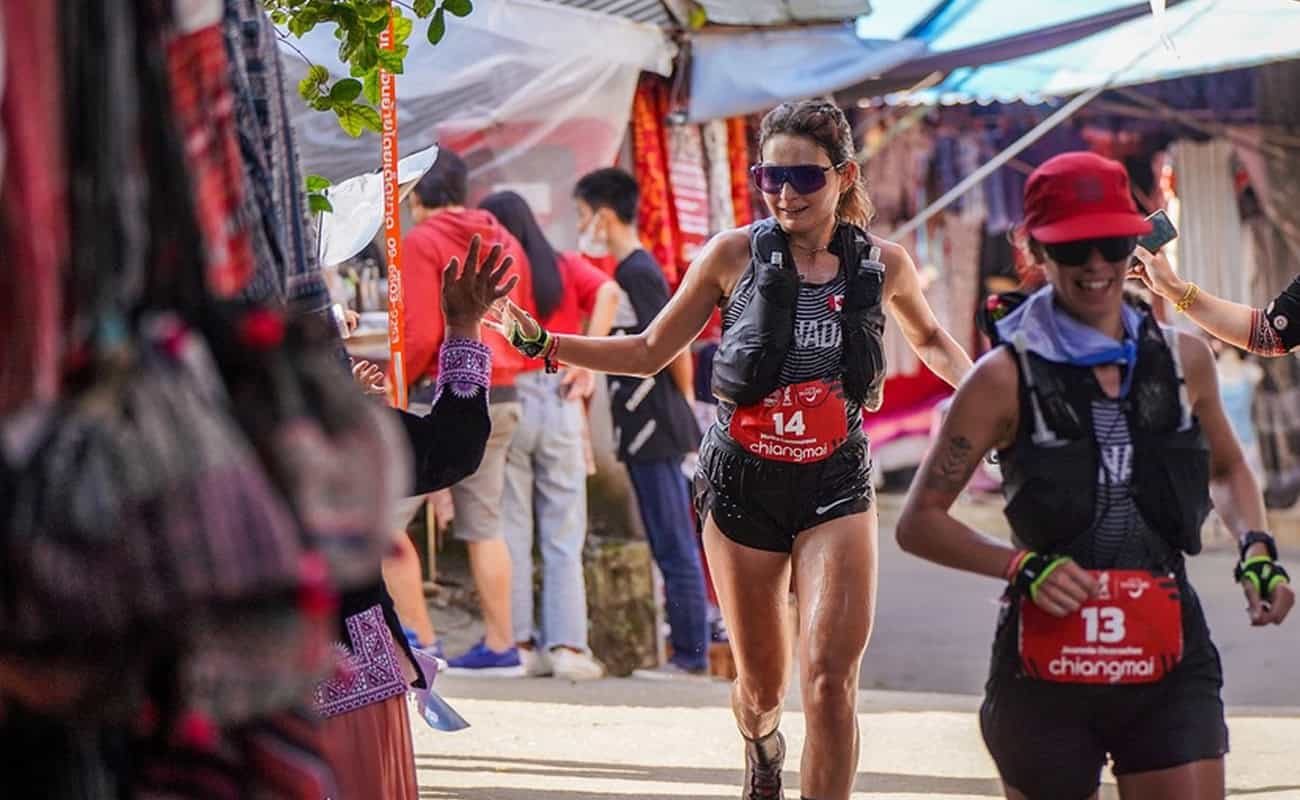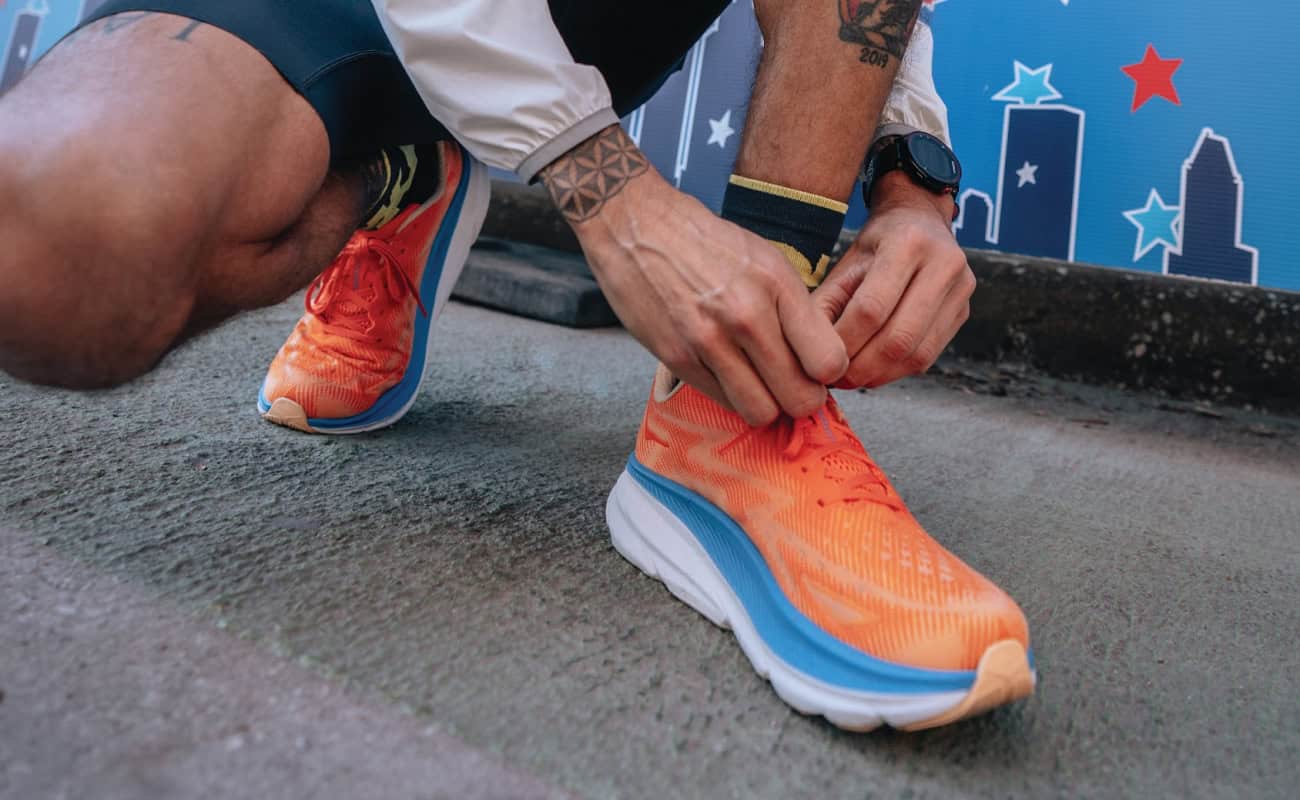‘Tis the season! While we all love to get outdoors in the warmer weather, there’s no denying that the summer sun can make exercise tough. Beat the sun’s strong rays with the right hydration gear and get the most out of your workouts.
Carrying Water While Exercising
Bikes are generally equipped with water bottle holders that are conveniently located so you can hydrate throughout your ride. There are also backpacks that hold water bladders and have a hose so that you can hydrate on the go. While hiking, you generally have a day pack which can easily hold multiple water bottles or a bladder, but how do you carry water while running?
Running with a water bottle in your hand is convenient but it isn’t so practical. It can be hard to have a good grip if the water bottle is too big or if your hands begin to perspire. Carrying a big water bottle in your hand can also be fairly distracting and may even throw off your technique.
Some runs are short enough that you can hydrate before and after, but this is not the case for others. Whether you’re running a marathon or your trail running in the mountains, you need to hydrate continuously which means carrying water with you.
Convenient Water Carrying Options
Innovations and new technologies bring many benefits to runners as new products arise that make carrying water while running much more convenient and appealing. There are multiple options that are convenient for everyone; whether you are a marathon runner, an adventure trail runner, or simply just starting out.
Some options are running belts equipped with water bottle holders, lightweight hydration backpacks, and even a collection of hydration vests and packs. These are specifically engineered to hold water, while other backpacks which can hold water bladders aren’t run-specific. These options allow you convenient access to water throughout your run while also keeping your hands free so you can focus on your technique.

Running with a Waist Belt
- Lorem ipsum dolor<\/li>
- Lorem ipsum dolor<\/li>
- Lorem ipsum dolor<\/li><\/ul>","_id":"2ffb236"},{"feature":"
- Lorem ipsum dolor<\/li>
- Lorem ipsum dolor<\/li>
- Lorem ipsum dolor<\/li><\/ul>","_id":"5d25161"}],"single_product_id":null,"cta_1_url":null,"cta_2_url":null,"credit":null,"limit":null,"collection_link":null}
Running with a waist belt can take some getting used to if you have never tried it before. There is definitely a sweet spot where the belt will sit comfortably and not interfere with your running technique. Once you find this sweet spot, you’ll never look back.
Some people are irritated or overheat faster while running with a hydration pack or a hydration vest. This is why a waist belt can be a great alternative. If you think a waist belt is an optimal choice for you, here are a few tips to get the correct fit.
- First and foremost, you’ll want to tuck your shirt into your shorts, pants, or tights. This eliminates any excess material flapping around that may obstruct your access to the water bottles.
- When wrapping the belt around your waist, you want to be sure to place it on your true waist and not your hips. If the belt is too low, it may feel uncomfortable and can easily interfere with your hip movements, altering your technique.
- Ensure the belt is a snug fit. If the belt is slightly loose, it may bounce and jiggle around excessively causing discomfort or creating a distraction.
- Last but not least, fill up your water bottles and pop them into their appropriate spots in the belt, then it’s time to get running!
Some Pro Tips:
- It may be more convenient to do your stretching before putting on your waist belt to avoid any restrictions or discomfort.
- If you want to increase your calorie expenditure, simply add some weights to the belt. These can easily be found in the fishing section at a sporting goods store.

Running With a Hydration Backpack
- Lorem ipsum dolor<\/li>
- Lorem ipsum dolor<\/li>
- Lorem ipsum dolor<\/li><\/ul>","_id":"1437cec"},{"feature":"
- Lorem ipsum dolor<\/li>
- Lorem ipsum dolor<\/li>
- Lorem ipsum dolor<\/li><\/ul>","_id":"2420289"}],"single_product_id":null,"cta_1_url":null,"cta_2_url":null,"credit":null,"limit":null,"collection_link":null}
The three main things to look out for when shopping for a hydration pack to wear while running is its capacity, design, and features.
Capacity
In general, you will want to look for a pack that holds around two to three litres. If you feel that’s too much water, you can always choose to not completely fill the pack for a shorter run. You may find you consume a lot less water in the colder months than in the warmer months, so having that extra bit of volume to accommodate warm-weather-running is ideal.
Design
When it comes to the design, you want to find something that will be comfortable and fit correctly–Can you reach and operate the hose easily? Are there any pressure or chafing points? Does the backpack fit flush to your spine or does it feel like you’ve got a monkey hanging on your back? In the summer months, chafing can become a problem so, while trying on the backpack, make sure you move around a bit and see how the bag feels and moves on your back.
Features
Hydration packs are most common with trail runners who go running in more remote locations where water refilling may be an issue and the lack of snack stations and corner shops. Most hydration packs have a sleeve that will hold a water bladder as well as a few pockets here and there to hold energy gels, Clif Bars and other goodies. If you have particular running essentials that come with you on every run, you’ll want to ensure that you’ve got a safe and convenient compartment to keep them.
A small security pocket is also handy on a hydration pack and a great place to store your house or car key as well as some cash or a few cards.
Running With a Hydration Vest
- Lorem ipsum dolor<\/li>
- Lorem ipsum dolor<\/li>
- Lorem ipsum dolor<\/li><\/ul>","_id":"1437cec"},{"feature":"
- Lorem ipsum dolor<\/li>
- Lorem ipsum dolor<\/li>
- Lorem ipsum dolor<\/li><\/ul>","_id":"2420289"}],"single_product_id":null,"cta_1_url":null,"cta_2_url":null,"credit":null,"limit":null,"collection_link":null}
Hydration vests are very similar to hydration backpacks although slight features and adjustments differentiate the two. Hydration vests are generally tighter and more body shaping than a backpack, offering a more stable and balanced option. Although running hydration backpacks are designed to be worn while running, they will often have a looser fit than a vest, and the majority of their weight focused on one area on your back.
Hydration vests are designed in a way that their weight is evenly distributed so that you can carry water, snacks, and other running essentials without feeling an immense weight centralized on your back.
Most hydration vests are equipped with water bottles and conveniently located pockets designed to hold them, although some may be equipped with a water bladder.
Water Bottle VS Water Bladder
As always, when there are choices, there are advantages and disadvantages. Some runners may prefer water bottles for hydration on the go, while others may prefer water bladders. At the end of the day, pick what works best for you. Avoid basing your decision on what looks cooler, instead stick to what works best for you.
If you’re just starting out and are really not sure what’s best for you, these few advantages and disadvantages may be the little rays of light you need to make a decision.
Water Bladder
Advantages of drinking from a hose attached to a water bladder include hands-free hydration and more focus on your technique as well as the path ahead of you. Disadvantages include having to take off your vest or pack in order to refill the bladder and most likely needing to remove the water bladder as well.
Water Bottle
Advantages of drinking from a water bottle include not needing to remove your vest or pack each time to get a refill as well as having access to two different beverages. Most waist belts and vests are designed to accommodate two bottles so you can fill one with water and the other with an isotonic beverage or a hydration mix.























